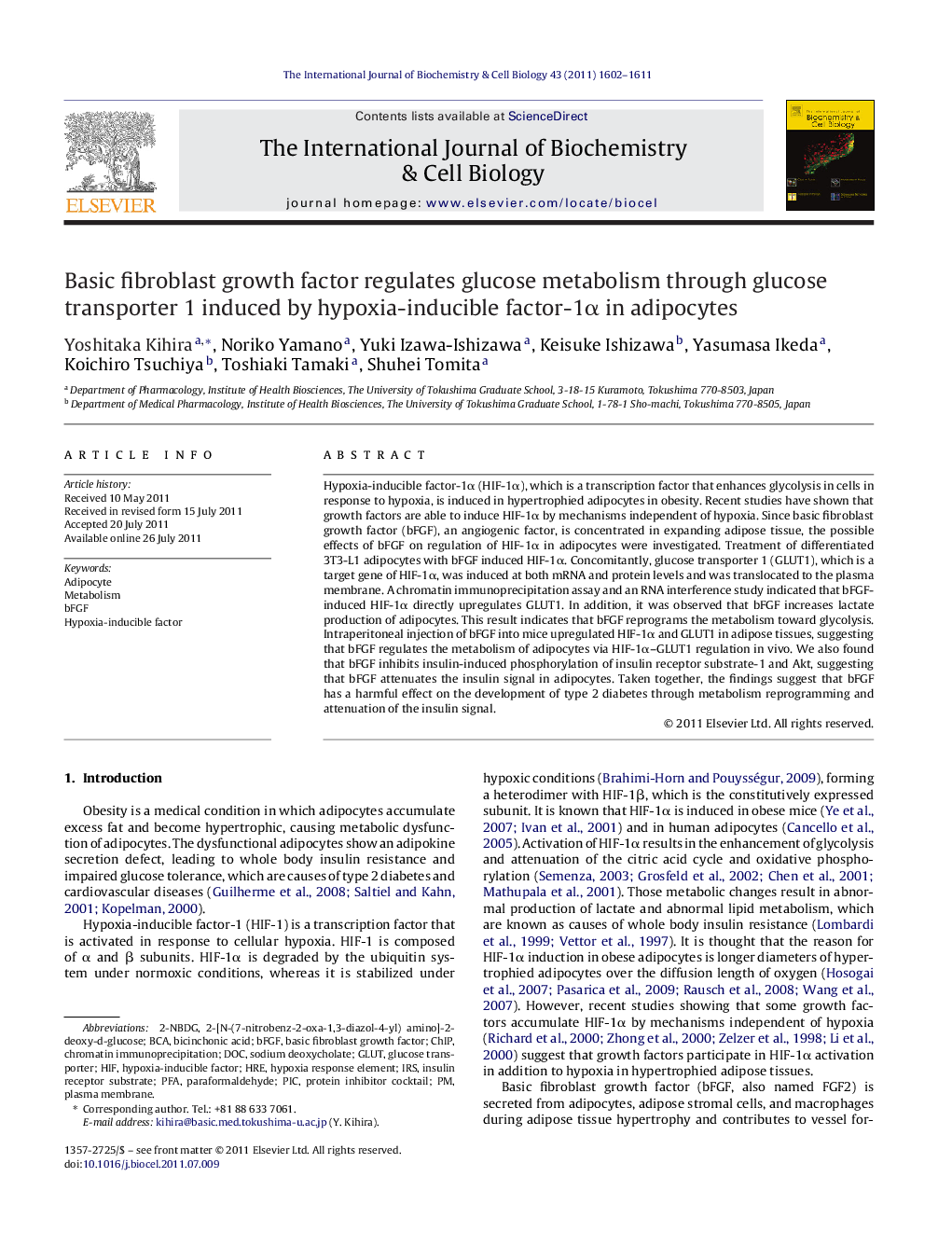| Article ID | Journal | Published Year | Pages | File Type |
|---|---|---|---|---|
| 1983954 | The International Journal of Biochemistry & Cell Biology | 2011 | 10 Pages |
Hypoxia-inducible factor-1α (HIF-1α), which is a transcription factor that enhances glycolysis in cells in response to hypoxia, is induced in hypertrophied adipocytes in obesity. Recent studies have shown that growth factors are able to induce HIF-1α by mechanisms independent of hypoxia. Since basic fibroblast growth factor (bFGF), an angiogenic factor, is concentrated in expanding adipose tissue, the possible effects of bFGF on regulation of HIF-1α in adipocytes were investigated. Treatment of differentiated 3T3-L1 adipocytes with bFGF induced HIF-1α. Concomitantly, glucose transporter 1 (GLUT1), which is a target gene of HIF-1α, was induced at both mRNA and protein levels and was translocated to the plasma membrane. A chromatin immunoprecipitation assay and an RNA interference study indicated that bFGF-induced HIF-1α directly upregulates GLUT1. In addition, it was observed that bFGF increases lactate production of adipocytes. This result indicates that bFGF reprograms the metabolism toward glycolysis. Intraperitoneal injection of bFGF into mice upregulated HIF-1α and GLUT1 in adipose tissues, suggesting that bFGF regulates the metabolism of adipocytes via HIF-1α–GLUT1 regulation in vivo. We also found that bFGF inhibits insulin-induced phosphorylation of insulin receptor substrate-1 and Akt, suggesting that bFGF attenuates the insulin signal in adipocytes. Taken together, the findings suggest that bFGF has a harmful effect on the development of type 2 diabetes through metabolism reprogramming and attenuation of the insulin signal.
